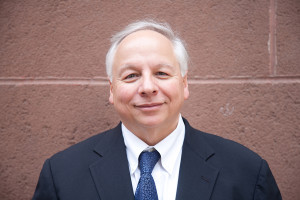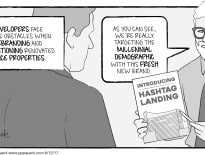When the Turnpike Extension opened in 1965, it established a new era of connectivity and economic opportunity for Boston and the region. Today, the Turnpike needs rebuilding, improvement and reconfiguration.
Over the first weekend in June, the next phase of the Commonwealth Avenue bridge replacement over the Turnpike was kicked off with a dry run of lane reductions and shifts. This work was preparation for closing the bridge to traffic and interrupting a branch of the MBTA Green Line for 18 days in late July and August to replace the inbound lanes of the avenue. Similar work will be repeated next summer to replace the outbound lanes of the bridge.
This work is necessary because the Turnpike extension and its bridges were opened 53 years ago, and the physical infrastructure is getting old and worn out. Immediately west of Commonwealth Avenue, the Turnpike viaduct next to Soldiers Field Road is also in deteriorating structural condition and needs to be replaced. This replacement is part of a much larger opportunity in the Beacon Park Yards that began last year with replacement of the toll booths with overhead gantries to collect All Electronic Tolling.
It is difficult to underestimate the land development opportunity presented by shifting the Turnpike in the area also known as Allston Landing. An entire new neighborhood can be built because the toll booths are now gone, allowing the interchange ramps and Turnpike to be rebuilt in a more neighborhood-friendly form. Up to 150 acres of land can be transformed into a new community, linked to the neighborhoods around it, and served by rail and bus connections at the proposed Commuter Rail stop dubbed West Station.
The concept for transportation improvements, placemaking and new economic development opportunities has been evolving for several years in a task force of neighbors and other interested parties convened by MassDOT, along with the city of Boston and consultants to these groups. MassDOT is currently preparing a draft environmental impact report, due to be issued later this year, that will document the transportation, placemaking and city building opportunities for this area. While the planning and design studies have continued, unfortunately, construction funding has not been found to build the improvements that can realize the potential of these plans.
These improvements are not the only opportunity in the Turnpike Corridor. A few weeks ago, the MBTA opened a new commuter rail station adjacent to the New Balance Headquarters at Boston Landing. The shoe company has made a substantial investment in the station, which is a critical element in the development taking place along Guest Street next to the Turnpike.
Insufficient Funds
In the future, Boston Landing Station, along with the new West Station and the recently rehabbed Yawkey Station near Kenmore Square, can be part of an “urban rail” network serving the Turnpike Corridor in Newton that can provide more frequent service to Back Bay and South stations. This network can also extend beyond the Turnpike Corridor to provide frequent service on the Fairmount Line in Boston, and could cross the Charles River to connect with Cambridge and even extend to North Station. Mobility in the corridor can be greatly enhanced and congestion on the Turnpike can be reduced with these improvements. West Station can be part of a multi-modal transportation hub with trains and buses connecting with Cambridge and destinations like the Longwood Medical Area and Roxbury.
All of these future improvements will require financial resources that today are not sufficient to fund these opportunities. A Better City has advocated for replacing the deteriorating Turnpike viaduct with an at-grade Turnpike that will cost less to build and maintain, will be easier to build and support more efficient traffic management during construction, and will make it easier to bridge over the highway to connect to the edge of the Charles River to increase open space opportunities.
In the ongoing environmental process, choosing a preferred alternative that saves money will make more funding available for the other desirable transportation and open space improvements in the Turnpike Corridor, but these savings will not be enough to pay for all of the improvements. It will also be important for the state legislature to allow tolls efficiently collected by those overhead gantries to be used to support long term bonds to finance a wider range of improvements in the Metropolitan Highway System that includes the Turnpike Corridor. Right now, tolls are used only for pay-as-you-go capital maintenance and improvements. Providing this funding flexibility can result in more benefits for more people and support further economic opportunities throughout the corridor and the region.
Rick Dimino is president and CEO of A Better City.




 |
| 


